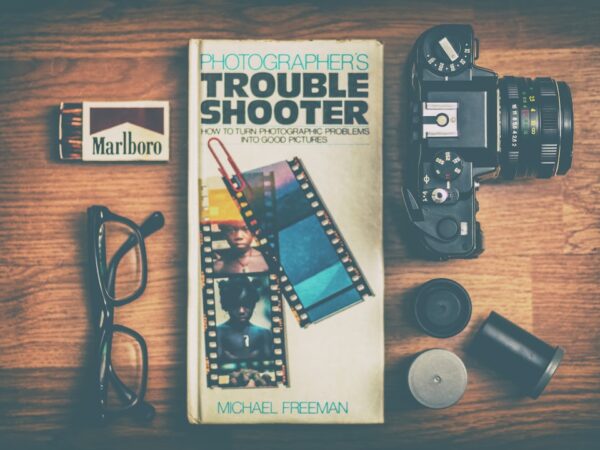
Unpacking the Legacy of Citizen Kane: Exploring the Timeless Brilliance of Orson Welles’ Masterpiece
Citizen Kane, directed by Orson Welles and released in 1941, is widely regarded as one of the greatest films ever made. Its impact on cinema cannot be overstated, as it revolutionized storytelling techniques, cinematography, and the use of sound in film. Even after nearly 80 years, Citizen Kane continues to be studied and celebrated for its innovative approach to filmmaking. In this article, we will delve into the various aspects that make Citizen Kane a timeless masterpiece and explore its lasting legacy.
Key Takeaways
- Citizen Kane is a timeless classic that has had an enduring impact on cinema.
- Orson Welles was the creative genius behind Citizen Kane, and his innovative approach to filmmaking revolutionized the industry.
- The making of Citizen Kane was a long and challenging process, but the end result was a groundbreaking film that changed the way stories were told on screen.
- Citizen Kane’s narrative structure was a game-changer, using flashbacks and multiple perspectives to tell a complex story in a new way.
- The cinematography of Citizen Kane was a masterclass in visual storytelling, with innovative camera angles and lighting techniques that set a new standard for the industry.
Orson Welles: The Creative Genius Behind Citizen Kane
Orson Welles was a true creative genius who made a significant impact on both stage and screen. Born in 1915, Welles had a diverse background in theater, radio, and film. He gained fame at a young age with his radio adaptation of H.G. Wells’ “The War of the Worlds,” which caused panic among listeners who believed it to be a real news broadcast. This incident catapulted Welles into the national spotlight and led to his eventual foray into filmmaking.
The idea for Citizen Kane came to Welles when he was just 25 years old. Drawing inspiration from the lives of powerful figures such as William Randolph Hearst and Joseph Pulitzer, Welles set out to tell the story of Charles Foster Kane, a wealthy newspaper magnate whose life is explored through a series of flashbacks and interviews. Welles’ ambition was to create a film that would challenge traditional narrative structures and push the boundaries of what was possible in cinema.
Welles not only directed Citizen Kane but also wrote the screenplay and starred in the film as the titular character. This level of involvement allowed him to have complete creative control over every aspect of the production, resulting in a film that truly reflected his vision. Welles’ performance as Charles Foster Kane is widely regarded as one of the greatest in film history, showcasing his immense talent as an actor.
The Making of Citizen Kane: From Conception to Completion
The making of Citizen Kane was not without its challenges. Welles faced resistance from the studio, RKO Pictures, who were initially hesitant to give a young and relatively inexperienced filmmaker complete control over a major production. However, Welles’ determination and persuasive skills convinced the studio to take a chance on him.
Welles assembled a talented cast and crew for Citizen Kane, including cinematographer Gregg Toland, who would play a crucial role in the film’s visual style. The film also featured notable performances from actors such as Joseph Cotten, Dorothy Comingore, and Agnes Moorehead. The collaboration between Welles and his team resulted in a film that was visually stunning and emotionally resonant.
Despite the talent involved, Citizen Kane faced numerous challenges during production. The film’s budget was limited, forcing Welles to find creative solutions to achieve his vision. Additionally, the tight schedule put pressure on the cast and crew to work efficiently. However, these constraints ultimately fueled Welles’ creativity and led to innovative techniques that would become hallmarks of the film.
Citizen Kane’s Narrative Structure: A Groundbreaking Approach to Storytelling
| Aspect | Metric |
|---|---|
| Length | 119 minutes |
| Number of Acts | 3 |
| Number of Scenes | 40 |
| Flashbacks | Multiple, used to reveal character backstory and motivations |
| Non-linear Narrative | Uses a non-linear structure to tell the story of Charles Foster Kane’s life |
| Use of Montage | Uses montage to show the passage of time and the rise of Kane’s power |
| Use of Symbolism | Uses symbolism to represent Kane’s character and themes of the film |
| Use of Sound | Uses sound to enhance the narrative and create mood and atmosphere |
One of the most groundbreaking aspects of Citizen Kane is its non-linear narrative structure. The film tells the story of Charles Foster Kane through a series of flashbacks and interviews conducted by a reporter trying to uncover the meaning behind Kane’s dying words: “Rosebud.” This fragmented narrative allows the audience to piece together Kane’s life and unravel the mystery surrounding his final word.
The non-linear structure of Citizen Kane serves multiple purposes. Firstly, it mirrors the way memories are often fragmented and subjective, allowing the audience to experience Kane’s life through different perspectives. Secondly, it creates a sense of mystery and intrigue, as the audience is constantly piecing together the puzzle of Kane’s life. Lastly, it allows for a deeper exploration of the film’s themes, such as the corrupting influence of power and the elusive nature of truth.
The innovative narrative structure of Citizen Kane had a profound influence on future films and filmmakers. It challenged the traditional linear storytelling approach and opened up new possibilities for how stories could be told on screen. Filmmakers such as Quentin Tarantino and Christopher Nolan have cited Citizen Kane as a major influence on their own work, demonstrating the lasting impact of Welles’ groundbreaking approach to storytelling.
The Cinematography of Citizen Kane: A Masterclass in Visual Storytelling
The cinematography of Citizen Kane, led by Gregg Toland, is often hailed as a masterclass in visual storytelling. Toland’s use of deep focus, where both the foreground and background are in sharp focus, created a sense of depth and allowed for complex compositions within the frame. This technique added layers of meaning to each shot and enhanced the film’s storytelling.
In addition to deep focus, Toland employed other innovative techniques in Citizen Kane, such as low-angle shots and dramatic lighting. These techniques helped to visually convey the power dynamics within the film and added a sense of visual flair to each scene. The cinematography of Citizen Kane was truly ahead of its time and set a new standard for how films could be visually captivating.
The influence of Citizen Kane’s cinematography can be seen in countless films that followed. Directors such as Stanley Kubrick and Martin Scorsese have cited Toland’s work on Citizen Kane as a major influence on their own visual style. The film’s use of deep focus and other techniques paved the way for future filmmakers to experiment with different visual storytelling techniques, leaving an indelible mark on the medium.
Citizen Kane’s Music Score: An Innovative Use of Sound in Film
The music score of Citizen Kane, composed by Bernard Herrmann, is another aspect of the film that contributed to its enduring impact. Herrmann’s score perfectly captures the emotional depth and complexity of the story, enhancing the audience’s experience and adding another layer of meaning to each scene.
Herrmann’s score for Citizen Kane is notable for its innovative use of leitmotifs, recurring musical themes associated with specific characters or ideas. This technique allowed Herrmann to musically represent the different facets of Charles Foster Kane’s life and personality. The use of leitmotifs added a sense of cohesion to the film and helped to reinforce its themes.
The influence of Citizen Kane’s music score can be seen in countless films that followed. Herrmann’s innovative approach to scoring a film paved the way for future composers to experiment with different techniques and push the boundaries of what was possible in film music. The impact of Herrmann’s work on Citizen Kane continues to be felt today, as filmmakers and composers continue to draw inspiration from his groundbreaking approach.
The Themes of Citizen Kane: Power, Wealth, and the American Dream
Citizen Kane explores a variety of themes that are still relevant today. One of the central themes of the film is the corrupting influence of power and wealth. Through the character of Charles Foster Kane, the film examines how the pursuit of power and material wealth can lead to isolation, loneliness, and a loss of personal identity.
Another theme explored in Citizen Kane is the elusive nature of truth. The film raises questions about the reliability of memory and the subjective nature of storytelling. By presenting multiple perspectives on Kane’s life, Welles challenges the audience to question their own understanding of truth and encourages them to consider how different narratives can shape our perception of reality.
The themes explored in Citizen Kane resonate with modern audiences because they reflect universal human experiences. The pursuit of power and wealth, as well as the search for personal identity and truth, are timeless themes that continue to be relevant in today’s society. Citizen Kane serves as a cautionary tale, reminding us of the dangers of unchecked ambition and the importance of staying true to ourselves.
Citizen Kane’s Reception and Legacy: From Controversy to Classic
Upon its release in 1941, Citizen Kane received mixed reviews from critics and was a commercial failure. The film’s unflattering portrayal of powerful figures in the media industry, particularly William Randolph Hearst, led to backlash and controversy. Hearst used his influence to try and suppress the film, resulting in limited distribution and negative publicity.
However, over time, Citizen Kane began to be recognized for its artistic merits and its impact on cinema. In 1942, the film received nine Academy Award nominations, including Best Picture, Best Director, and Best Actor for Orson Welles. While it only won one award for Best Original Screenplay, the nominations were a testament to the film’s artistic achievements.
In the years following its release, Citizen Kane’s reputation continued to grow. It became a staple of film studies programs and was celebrated for its technical innovations and storytelling techniques. Today, it is widely regarded as one of the greatest films ever made and is often included in lists of the best films of all time.
Citizen Kane’s Influence on Cinema: A Look at its Enduring Impact
The influence of Citizen Kane on future films and filmmakers cannot be overstated. Its innovative narrative structure, groundbreaking cinematography, and innovative use of sound have had a lasting impact on the medium.
Numerous films have been directly influenced by Citizen Kane, both in terms of style and storytelling techniques. Directors such as Martin Scorsese, Quentin Tarantino, and David Fincher have all cited Citizen Kane as a major influence on their work. The film’s non-linear narrative structure has been emulated in countless films since its release, and its visual style continues to inspire filmmakers to push the boundaries of what is possible in cinema.
Citizen Kane’s impact can also be seen in the way it changed the perception of what a film could be. It challenged the notion that films had to adhere to traditional storytelling conventions and opened up new possibilities for how stories could be told on screen. The film’s boldness and willingness to experiment paved the way for future filmmakers to take risks and push the boundaries of the medium.
The Timeless Brilliance of Citizen Kane and Orson Welles’ Legacy
In conclusion, Citizen Kane is a timeless masterpiece that continues to captivate audiences nearly 80 years after its release. Orson Welles’ creative genius and his willingness to push the boundaries of filmmaking resulted in a film that revolutionized the medium. From its innovative narrative structure to its groundbreaking cinematography and music score, Citizen Kane remains a shining example of what can be achieved in cinema.
It is important to recognize Orson Welles’ contributions to cinema and his enduring legacy. His boldness, creativity, and determination continue to inspire filmmakers today. Citizen Kane serves as a reminder of the power of storytelling and the impact that a single film can have on an entire industry.
In conclusion, Citizen Kane’s impact on cinema cannot be overstated. Its innovative approach to storytelling, groundbreaking cinematography, and innovative use of sound have had a lasting influence on the medium. Orson Welles’ creative genius and his willingness to push the boundaries of filmmaking resulted in a film that continues to captivate audiences nearly 80 years after its release. Citizen Kane is a timeless masterpiece that will forever be celebrated for its enduring brilliance.
If you’re a fan of the iconic movie Citizen Kane, you’ll definitely want to check out this fascinating article on Wave Magnets. This article delves into the innovative techniques used by director Orson Welles in creating the groundbreaking film. From the use of deep focus cinematography to the intricate storytelling structure, Citizen Kane continues to captivate audiences even decades after its release. To learn more about the behind-the-scenes magic of this cinematic masterpiece, click here: https://wavemagnets.com/.
FAQs
What is Citizen Kane movie?
Citizen Kane is a 1941 American drama film directed, co-written, produced by, and starring Orson Welles. It is often cited as one of the greatest films ever made.
What is the plot of Citizen Kane movie?
The film follows the life of Charles Foster Kane, a wealthy newspaper magnate, and his rise to power and subsequent downfall. The story is told through a series of flashbacks after Kane’s death, as a reporter tries to uncover the meaning behind Kane’s last word, “Rosebud.”
Who stars in Citizen Kane movie?
Orson Welles stars as Charles Foster Kane, along with Joseph Cotten, Dorothy Comingore, Agnes Moorehead, Ruth Warrick, and Everett Sloane.
What is the significance of Citizen Kane movie?
Citizen Kane is considered a landmark in the history of cinema for its innovative cinematography, use of deep focus, and non-linear narrative structure. It has been praised for its complex characters, social commentary, and exploration of the American Dream.
Has Citizen Kane movie won any awards?
Yes, Citizen Kane was nominated for nine Academy Awards and won the award for Best Original Screenplay. However, it was controversially snubbed for Best Picture, with many believing that the film’s negative portrayal of William Randolph Hearst, a powerful media mogul, played a role in its loss.
Where can I watch Citizen Kane movie?
Citizen Kane is available to stream on various platforms, including Amazon Prime Video, Google Play, iTunes, and Vudu. It is also available on DVD and Blu-ray.


















